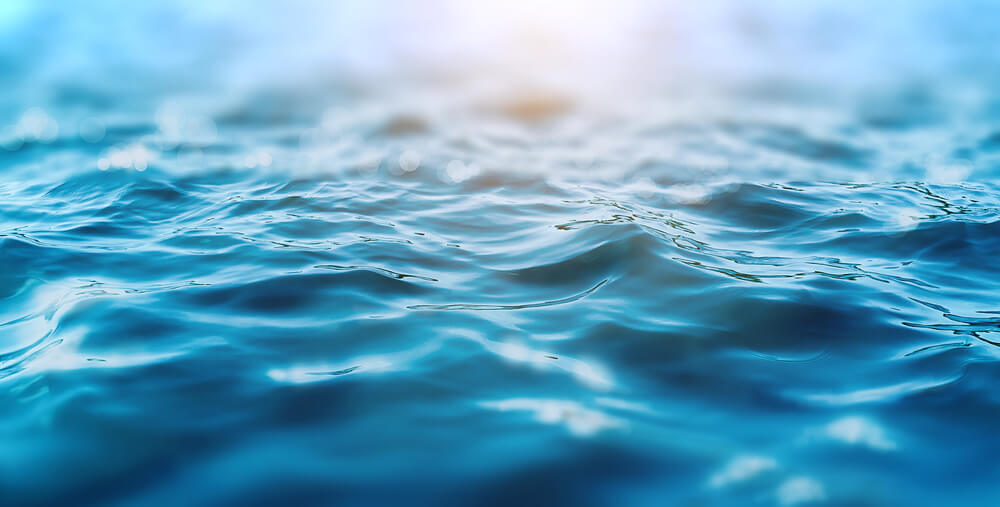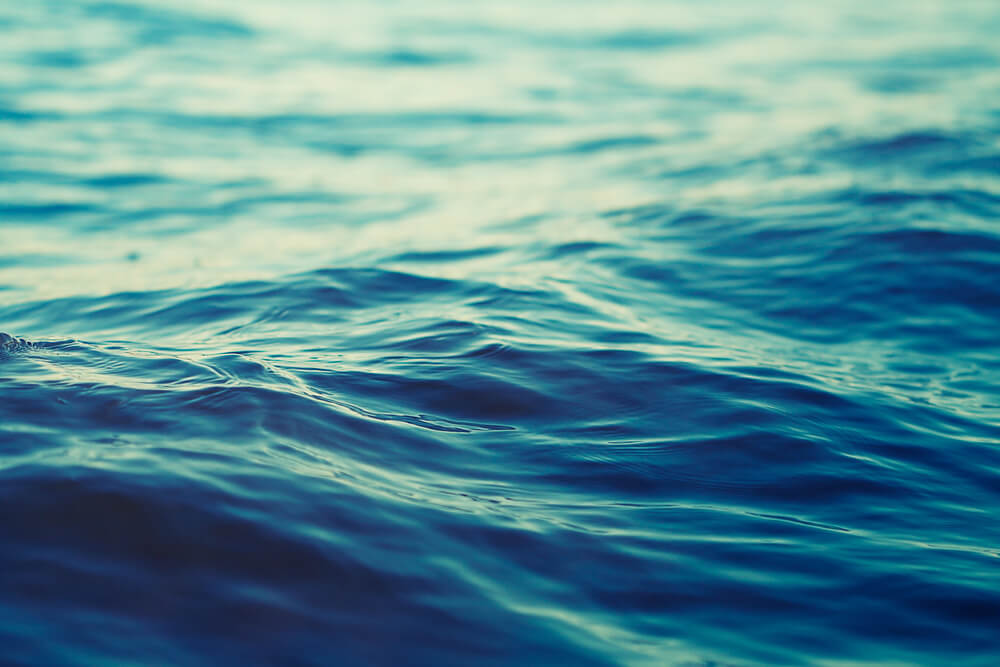Water Resources and Crisis in Pakistan
Pakistan’s economy is agriculture based, with over thirty-one percent contributions to the gross domestic product by this sector and about sixty-nine percent of the total human resources directly earning their livelihood. However, our agriculture primarily depends on the water supplied through our irrigational system, which is quickly becoming inefficient for various reasons, mainly due to decreasing storage capacity of our dams and irrigational channels. At the same time, surface and subsurface water resources are also rapidly depleting. The primary cause of this liaise is inefficient management at almost all levels resulting in immense wastage of this direly needed commodity. Besides seriously affecting our agriculture sector, poor governance, and inadequate water resource planning negatively influence our energy generation potential. In this regard, it may be noted that hydel power is the cheapest source of energy generation. In a nutshell, this God-gifted source is being wasted, misused, and grossly underutilized. There is, therefore, an urgent need to take cognizance of these issues, or else our future generation will be condemned to perpetual economic miseries with self-reliance a distant dream.
Water Crisis in Pakistan
Pakistan is one of the 30 countries facing an acute water deficiency, likely to aggravate during the forthcoming decades. More than 80% of Pakistan lies in arid and semiarid zones, characterized by highly erratic, unpredictable, low precipitation, excessive evapotranspiration, and high summer temperatures. Coupled with uneven river flow, the climatic vagrancy has placed Pakistan in a critical water supply environment. Presently Pakistan is undergoing the worst drought and water crises of its history, likely to persist for a few years.

Importance of Water
Water is one of the essential life-supporting elements in the world’s ecological systems and hence is a precious gift of Mother Nature to be maintained in its natural form. Though 97.5% forms part of oceans and only 2.5% is fresh, 0.26% of the total amount of fresh water is enough to meet the requirement of the earth. The twenty-first century has approached with increasing demand for water because of the population growth and associated activities like the sub-division of rural agricultural holdings, which decreases the amount of cultivated land per rural inhabitant; the denudation of well-forested hillsides; the migration of villages from high mountain pastures to valleys; and the migration of a large number of young people to cities. Either the water supply is to be increased through tapping new resources, or the wastage of available resources is minimized, and surplus from annual peak flows is stored into surface or subsurface reservoirs.
Water Resources in Pakistan
Rainfall is the primary source of surface water. The average annual rainfall is about 238 mm, equivalent to 150 MAF.
Groundwater is a vital natural resource that plays a crucial role in irrigation in Pakistan. In many areas of Pakistan, it has transformed the concept of low and uncertain crop yields into a more secure and predictable form of crop production. The overall effect has been to a tune of an increase in the cropping intensity from 63% in 1947 to 120% in 2000. The ground aquifer of the plains of Pakistan providing groundwater is recharged from direct natural precipitation, river flows, and continued seepage from the conveyance system of canals and application losses in the irrigated lands. The assessed potential is 50 MAF, out of which 38 MAF is already being exploited. As a result of this dramatic increase in the intensity of groundwater exploitation, the policy paradigm has changed from development to management.
Among the natural resources, rivers are of primary importance. The rivers of Pakistan mainly carry the melting snow and rains from the northern hills down to the plains, where they can be used for irrigation and other purposes. From mid-March to July, river discharge is mainly derived from melting snow; from mid-July to September, rainfall is also added.
Water Demand and Availability in Pakistan
Major Water Crisis Causes in Pakistan
Water is a unique resource. The conservation and management of water supplies in Pakistan is crucial as the need for water continues to rise because of the rapidly increasing population while its supply is reducing. To overcome this critical situation, it is imperative to save water, make its use more effective and obtain optimum results by reducing its losses.

Pakistan’s immediate water shortage crisis is severe, and experts maintain that the long-term forecast is quite bleak. Meteorologists, who blame the prolonged drought on the La Nina weather phenomenon, warn that the country has entered a dry cycle and can expect drought-like conditions to return every six years. The experts predict that with prevailing consumption rates and population growth of 4 million people a year, one out of three people in Pakistan will face critical water shortages, “threatening their very survival.”
Inefficient Management and Distribution System.
Most of Pakistan’s canals and water channels are unlined, and fields are unlevelled. As a result, seepage, conveyance, and evaporation losses go as high as 68%. Inefficient management also results in uneven water distribution between head and tail users. Weed growth and lack of regular desilting are adding to water shortages. The disparity of water allowances in various areas is yet another cause of discontentment and water shortages in some areas.
Increase in Water Demand
The water demand is continuously rising. Some of the major leading factors are:
- Increase in Cropping Intensity
- Cropping Pattern
- Additional Requirement of Water
- Urbanisation and Industrialisation
Escape to Sea
Presently approximately 39.3 MAF of water is being wasted at sea. To stop sea intrusion inland and protect deltaic life maximum of 10 MAF of water is required. This additional inflow to the sea is causing water shortages in the country.
Reduction in Reservoir’s Capacity
The capacity of the three major water reservoirs, i.e., Tarbela, Mangla, and Chashma, is rapidly reduced due to sedimentation. If sedimentation continues at the same pace, we shall lose the equivalent of one Mangla dam storage capacity in the next ten years.
Increase in Population
Water use increases along with population expansion and water required for food production. We will need to pump freshwater more quickly than it can be recharged to meet the demands for food production brought on by the rapid increase in population. Areas in Asia that currently struggle with overpumping because of insufficient groundwater supplies may face additional difficulties.

Global Warming
Weather patterns are changing due to climate change, leading to extreme weather events, uncertain water availability, worsening water scarcity, and tainted water sources.
Between 2001 and 2018, water use played a role in almost 74% of all natural catastrophes, including floods and droughts. With climate change, it is only anticipated that such occurrences will occur more frequently and intensely.
Children in locations with high or incredibly high water susceptibility number around 450 million. This indicates that they lack access to enough water to meet their basic needs.
The risk of illnesses like cholera and typhoid, to which adolescents are particularly susceptible, rises when disasters strike because they can destroy or pollute entire water systems.
Freshwater supplies may get contaminated with lethal germs due to rising temperatures, making it unsafe for humans to drink.
Overuse of Water
Urban and rural industries use less than 3 percent of average river inflows and about 4 percent of surface water diverted for irrigated agriculture 5.3 BCM. Most urban and rural water is supplied from groundwater except for metropolitan Karachi. In saline groundwater areas, irrigation canals are the primary source of domestic water. Over 50 percent of the village water supply is through hand pumps installed by private households. Total requirements for urban and rural domestic, commercial, industrial, and livestock use are estimated as 12.6 BCM by 2010 and 19.6 BCM by 2020, 1015 percent of surface water diversions. Significantly, more than 80 percent of the domestic, municipal, and industrial diversions usually return to the system with degraded quality. Net consumption here would be 2.5 BCM by the year 2010 and 3.9 BCM by the year 2020
Lack of Infrastructure
Poorly made or old pipes can waste vast amounts of water, in addition to wasting water. Although providing the populace with clean water is the ultimate goal, some municipalities have trouble doing so because of outdated water treatment facilities, water plants, or sewage systems. This may be partially caused by the fact that water prices do not cover the service’s costs. As a result, some regions cannot invest in the upkeep of their water infrastructure.

Water Politics
Even though the Treaty has served both India and Pakistan for the last 40 years, India has not fully respected the Treaty. She is always on the lookout to explore controversial clauses in the Treaty and exploits them to her favor. With increasing water scarcity and population pressure, there is the likelihood that India may demand a review of the Treaty. Taking advantage of the provisions of the Treaty according to which India is permitted to use water for domestic, nonconsumptive (including navigation), agriculture, and hydroelectric power, India has already initiated many storage projects.
The issue of water sharing has been focused on India and Pakistan because the bulk of water flows from India to Pakistan. Nevertheless, Pakistan also shares water with Afghanistan. River Kabul and its Tributaries, River Kurram, Gomal, Pashin Lora, Kaisar, Kandai, and River Kand, flow from Afghanistan to Pakistan. Their accumulated discharge is more than the inflow of River Jhelum. Afghanistan has already undertaken a few projects on tributaries of River Kabul. Mahipar, Naghlu, Sarobi, Darunta, and Madan Sahar projects already stand completed, whereas there is substantial potential for harnessing more hydroelectric and irrigation projects. Kama Project, located 13 Km from Kabul with 445000 AF capacity, was actively considered in 1988. This project alone would have reduced 58% inflow in River Kabul besides causing an 11% reduction in power generation. If the Afghan Government decides to undertake more projects on rivers flowing into Pakistan, then these will have adverse effects on water uses already being made in our country. Indian involvement in Afghan Irrigation affairs can further compound the situation. Contrarily, the participation of the Pakistan Water and Power Department in Afghanistan Irrigation Projects would benefit Pakistan in the long run. A Treaty with Afghanistan on water sharing shortly would be a step in the right direction.
Water Crisis Effects
Water is essential to life and is vital for maintaining society, economies, and local communities. In contrast to its absence, which disperses and condemns, its presence draws and sustains. Communities must have access to sources and systems that can produce and put out fires while meeting their drinking water, sanitation, and production needs. The continuing operation of other essential infrastructures, including electricity, also depends on water.
Electricity is essential to keeping a good water source at sufficient pressure, much like water is to life. Water is drawn, treated, transported, and delivered across a system using electricity. Most water systems expire within a few days without electricity. Additionally, they don’t just cease operating; instead, they become polluted by input, which makes restoration after a total shutdown extremely difficult and time-consuming. A black start using a water system seems more challenging and time-consuming than one including an electric system.
Poverty
Increased water availability enables households to improve crop productivity, grow high-valued crops, and generate higher incomes and employment. This helps reduce poverty’s incidence and severity, primarily if landholdings are equitably distributed. However, irrigation may also have negative implications for poverty. Poor canal design and faulty structures, inequity in water distribution, untimely water deliveries, and poor irrigation water results in the loss of agricultural productivity, especially for the poor. The irrigation may also result in converting fertile land to wasteland and loss of crops, fisheries and navigation, and arsenic-contaminated groundwater for irrigation, which could create serious health hazards. Less access to surface water and poor quality of groundwater at the tail end reduces productivity and consequently has negative welfare impacts for the poor farmers.

How Can Pakistan Overcome the Water Crisis?
Canal Lining. Approximately 50 MAF of water is wasted due to unlined canals and water courses. Though it will entail a considerable expenditure (around Rs 190 Billion) in the long run, it will pay back the cost in terms of additional revenues and crop yields.
Improving Water Efficiency
The absence of scientific methods and unlevelled fields results in up to 40% of water wastage. On-farm applications can be significantly improved by changing age-old traditional flood irrigation, laser leveling, etc.
Irrigation Literacy
An extensive social awareness campaign is required to create irrigation literacy in the masses and educate them about modern irrigation techniques.
Changes in Cropping Pattern
Different crops require different quantities of water. For example, sugarcane is heavier on the water than wheat and cotton. Appropriate changes in cropping patterns may be considered to conserve water, meet water shortages, and match water requirements with supplies.
Revision of Existing Water Charges
The water charges charged by the farmers are too meager and are based on the irrigated area rather than the quantity of water used. It is recommended that the water charges be levied on the amount used. Moreover, the costs are slightly enhanced.

Reduction on Reliance of Canal Water
There are vast areas where a water table survey has not been done. Resultantly the water resources of these areas remain untapped. It is suggested that a proper ground survey of these areas be carried out to determine the quality and quantity of the water. The explored water resources are utilized for irrigation and drinking if found suitable.
Cloud Seeding
Pakistan was one of the pioneers of cloud seeding (artificial rains) technology, which had been abandoned without any reason. It is suggested that the Cloud Seeding program should be activated and institutionalized.
Increase Water Reserves
Increased water availability at the farm gate and achieving higher water use are the focus of the National Water Vision. The country’s already available research and developmental infrastructure, climatic conditions, and land resources are well-suited for achieving these targets. However, the need is for increased commitment by various administrative, developmental, and extension agencies to implement legislation in protecting water bodies and extend research results to users in the form of better and improved crop varieties, fertilizers, pesticides, water use, management practices, etc. A three-pronged approach towards the formulation of strategies to meet the growing scarcity of water needs is proposed. The general process involves:
· Tapping existing unutilized resources and developing new and unexplored water resources.
Maximizing water resources to achieve the maximum production per unit of water used.
· Improving the intuitional setup and better water resources, institutions, and infrastructure governance.
Water Recycling
As part of the water cycle, all water is automatically recycled and used again. Human-made water recycling, called water reclamation or water reuse, focuses on using wastewater from residences and commercial establishments that have been sufficiently purified to be appropriately reused.

Reusing wastewater can increase freshwater resources, enhance water quality, conserve energy, and lower wastewater discharge and disposal costs. Domestic grey water is another recycled water, but treated municipal sewage or wastewater makes up most of it.
Awareness & Education
Impart knowledge and understanding about water conservation practices and modern high-efficiency irrigation systems among users. For this purpose, extensive social awareness campaigns are required using mass media and village-to-village campaigns.
FAQS
What is the current situation of water in Pakistan?
Regarding the ratio of water withdrawals to available water resources, Pakistan is placed 160th, better than only 18 other nations. Additionally, the nation treats barely 1% of wastewater, among the lowest percentages in the world.
When will the world run out of water?
By 2040, the world will experience a severe water shortage if water use is not dramatically decreased. If we continue, there won’t be any water by 2040.
Is Pakistan running out of water?
Pakistan is facing an acute water shortage; if adequate measures are not taken, the country will face unbearable consequences.
